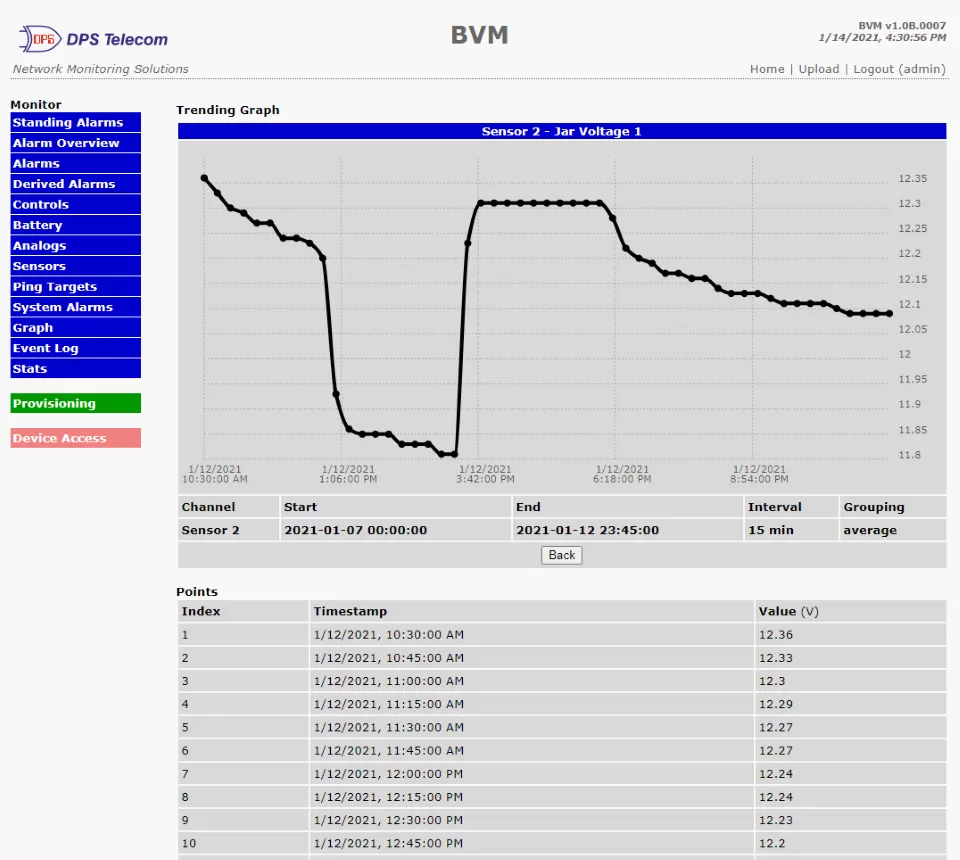Check out our White Paper Series!
A complete library of helpful advice and survival guides for every aspect of system monitoring and control.
1-800-693-0351
Have a specific question? Ask our team of expert engineers and get a specific answer!
Sign up for the next DPS Factory Training!

Whether you're new to our equipment or you've used it for years, DPS factory training is the best way to get more from your monitoring.
Reserve Your Seat TodayNetwork downtime is a major expense for any business. It's terrible for your organization's reputation and your customers' experience. Worse, depending on the site, lives could be put in danger in the case of a power outage.
You can't rely on a single power source to keep your critical equipment running at all times. To prevent downtime of your networking equipment, you'll need an uninterruptible power supply (UPS).
An uninterruptible power supply system is a source of backup power that almost immediately activates when the main power source fails. It should supply power within 25ms and sustain sensitive equipment at the site until the main source of power is restored.
Firstly, the UPS rectifier converts the input power from AC power to DC power.
Secondly, it charges the battery.
These are the emergency source of power. There are different types of batteries, and different possible configurations.
An uninterruptible power supply relies most often on valve-regulated lead acid (VRLA) batteries. It is also possible to use other types of batteries, including lithium-ion batteries, Absorbed Glass Mat (AGM) batteries, or thin-plate-pure-lead batteries to power your UPS system.
Possible string configurations for UPS backup batteries include:
The inverter switches the DC voltage back to AC power output. The purpose of this is to make sure the output is a pure sine wave.
Battery monitoring sensors and an RTU work together to monitor the vital elements of battery health. Remote monitoring gear will send out notifications if anything fails or is not operating within expected parameters. This prevents network outages and saves time and money by continuously and remotely transmitting UPS battery and network health data.
Consumer-grade UPS systems generally are only capable of supplying backup power for a few minutes. They are typically intended for surge protection, to maintain home and other small-scale systems. For example, surge protectors help prevent damage to computers in the case of a sudden loss of power.
This can be useful short-term to ensure proper shutdown of critical equipment, but it is simply not sufficient to keep your telecommunications site running until regular power is restored.
If you need to power a large data center or other telecom site, you need something far more functional. Maintaining power supply for long enough to ensure uninterrupted service can actually save lives. For this reason, a reliable and high-capacity UPS is necessary for your organization.
An RTU with UPS battery monitoring is ideal for monitoring the health of your backup batteries. An effective system including reliable UPS and an RTU will ensure constant uptime of your network.
Any basic high-level UPS monitoring system you can find will monitor voltage. In order to prevent (rather than just detect) a weak link in your battery string, you need to monitor three things. These "big three" are the:
The voltage reading will tell you the input of power from each backup battery. The temperature is important to monitor to keep an eye on thermal runaway. Internal resistance is indicative of the longevity of your batteries. Monitoring all three of these elements is key to detecting and even anticipating the failure of any individual battery in your string.
A fault of any one battery in your battery string can compromise your entire backup power supply.
The BVM G3 is a small RTU that monitors the voltage, temperature, and internal resistance of UPS batteries. Not only can it monitor the three vital components of battery health, but has an interface that makes it easy to track data, identify trends, and anticipate the failure of faulty or old batteries. With 6 analog and 8 discrete alarms, it is equipped to simultaneously monitor up to 24 cells and will report threshold alarms via SNMP.
If you're looking for an RTU capable of tackling the monitoring more equipment at your site than just the UPS, I recommend the NetGuardian G6 832A with battery sensors. The NG G6 832A has a battery monitoring feature, which, when enabled, allows you to monitor the voltage, temperature, and internal resistance of batteries. This comprehensive RTU monitors your data center and telecom gear itself and the conditions at your sites. It also supports dual battery voltage monitoring for your backup batteries.
...literally.
An RTU with battery monitoring capabilities like the above mentioned BVM G3 and NetGuardian G6 832A do all the hardest work for you.

There's no need to send technicians to do routine checks of your backup batteries. There's no need for manual calculations or guessing about when it's time to replace your batteries. It's easy to track the health of your individual UPS batteries with instant readings and graphs showing trends over time.
DPS can also reimagine a perfect-fit UPS monitoring solution for you. All our gear is made to order, and we specialize in custom equipment for your specific needs. Give us a call (559-454-1600) or send an email to sales@dpstele.com to talk to us about getting a UPS monitoring system that works for you.

Andrew Erickson
Andrew Erickson is an Application Engineer at DPS Telecom, a manufacturer of semi-custom remote alarm monitoring systems based in Fresno, California. Andrew brings more than 19 years of experience building site monitoring solutions, developing intuitive user interfaces and documentation, and opt...